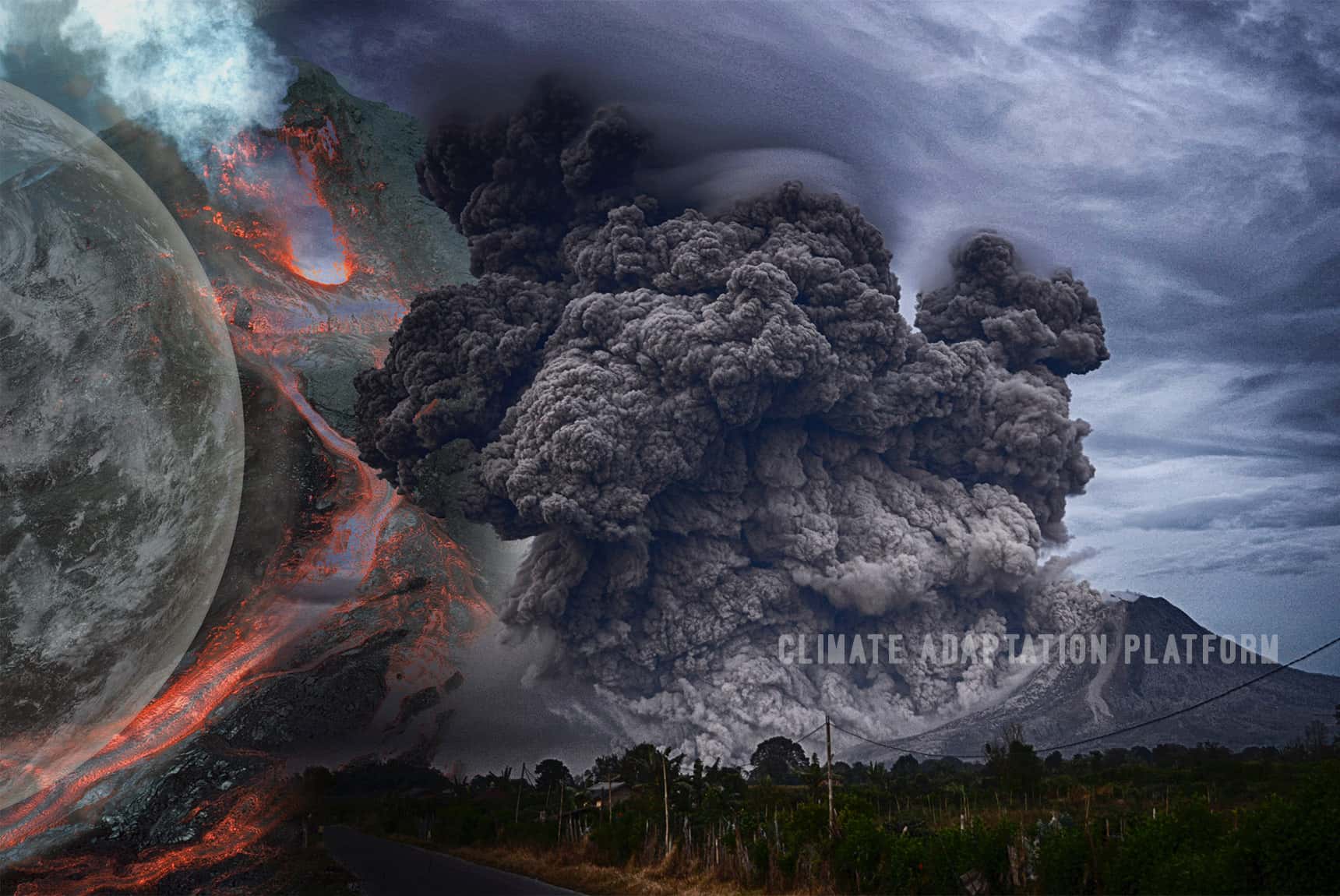Earth - Series 1: Inferno - Exploring The Causes And Effects Of Volcanic Activity

Table of Contents
The Causes of Volcanic Activity: Plate Tectonics and Magma Formation
Plate Tectonics: The Driving Force
The theory of plate tectonics provides the fundamental framework for understanding volcanic activity. Earth's lithosphere is divided into several large and small tectonic plates that are constantly moving, driven by convection currents in the Earth's mantle. The interactions at the boundaries of these plates are responsible for the majority of volcanic activity on Earth.
Different types of plate boundaries contribute to magma generation and subsequent eruptions:
- Convergent boundaries: Where two plates collide, one often slides beneath the other in a process called subduction. The subducted plate melts, generating magma that rises to the surface, forming volcanic arcs like those found along the Pacific Ring of Fire. This magma generation is a key aspect of volcanic activity in these zones.
- Divergent boundaries: At mid-ocean ridges, plates move apart, allowing magma from the mantle to rise and create new crust. This process, known as seafloor spreading, results in extensive underwater volcanic activity.
- Hotspots: These are areas where exceptionally hot mantle plumes rise to the surface, creating volcanoes even far from plate boundaries. The Hawaiian Islands are a prime example of volcanism resulting from a hotspot.
Magma Formation and Composition
Magma, molten rock beneath the Earth's surface, is the precursor to all volcanic eruptions. Its formation involves a complex interplay of pressure, temperature, and the presence of dissolved gases. As pressure decreases, or temperature increases, these gases dissolved in the magma can expand, causing the magma to rise towards the surface.
The composition of magma, particularly its silica content, greatly influences its viscosity (resistance to flow). High silica magma is viscous and traps gases, leading to explosive eruptions. Low silica magma is less viscous and flows more easily, resulting in effusive eruptions. Several factors are crucial:
- Factors influencing magma viscosity: Silica content is the primary factor. Higher silica means higher viscosity.
- The role of dissolved gases: Gases like water vapor and carbon dioxide act as pressure-building agents within the magma. Their expansion contributes significantly to the explosivity of eruptions.
- Different magma types: Basaltic magma (low silica) is associated with effusive eruptions, while rhyolitic magma (high silica) is linked to explosive eruptions. Andesitic magma falls in between.
Types of Volcanic Eruptions and Their Effects
Explosive vs. Effusive Eruptions
Volcanic eruptions are broadly categorized into explosive and effusive types, primarily determined by the magma's viscosity and gas content.
- Explosive eruptions: These are characterized by violent explosions that eject large amounts of volcanic ash, gas, and pyroclastic flows (fast-moving currents of hot gas and rock). High viscosity magma, often rich in silica and gas, is the driving force behind these events. Examples include the eruptions of Mount Vesuvius and Mount St. Helens.
- Effusive eruptions: These involve the relatively gentle outpouring of lava flows. Low-viscosity magma, typically basaltic, allows gases to escape easily, resulting in less explosive activity. The eruptions of Hawaiian volcanoes are classic examples of effusive events. The resulting lava flows can travel for long distances, significantly altering the landscape.
The Impact of Volcanic Activity on the Environment and Human Populations
Volcanic activity has profound and varied impacts on the environment and human populations.
Environmental Effects:
- Short-term: Air pollution from volcanic ash and gases can have significant local and regional effects, impacting air quality and causing respiratory problems. Ashfall can also damage crops and infrastructure.
- Long-term: Large eruptions can inject significant amounts of aerosols into the stratosphere, causing a temporary cooling effect on global climate. Volcanic ash, however, contributes to soil fertility over time.
Impacts on Human Populations:
- Volcanic hazards are considerable and include: lava flows, pyroclastic flows (extremely dangerous, fast-moving currents of hot gas and rock), lahars (volcanic mudflows), tsunamis (triggered by underwater or coastal eruptions), and ashfall.
- Volcanic risk assessment and volcanic ash clouds are key areas of study for mitigating risks.
- Mitigation strategies involve monitoring volcanic activity, developing evacuation plans, and constructing protective structures.
Examples of historically significant eruptions and their impacts demonstrate the far-reaching consequences of volcanic activity.
Conclusion
Volcanic activity, a powerful expression of Earth's internal processes, profoundly shapes our planet's landscape and influences its climate. Understanding the causes and effects of volcanic activity is crucial for mitigating risks to human populations and appreciating the dynamic nature of our world. From plate tectonics to the devastating power of explosive eruptions, we've explored the fundamental aspects of this geological phenomenon. Continue learning about the incredible forces shaping our planet by exploring further into the fascinating world of volcanic activity and its impact on our Earth. Stay tuned for the next installment in our "Earth" series!

Featured Posts
-
 Tory Lanez Prison Stabbing Details Emerge After Cell Raid Controversy
May 13, 2025
Tory Lanez Prison Stabbing Details Emerge After Cell Raid Controversy
May 13, 2025 -
 The Top 10 Efl Games That Defined A Generation
May 13, 2025
The Top 10 Efl Games That Defined A Generation
May 13, 2025 -
 Analyzing Lara Croft Tomb Raider The Cradle Of Lifes Impact On The Franchise
May 13, 2025
Analyzing Lara Croft Tomb Raider The Cradle Of Lifes Impact On The Franchise
May 13, 2025 -
 Heist Film Sequel With Beloved Scottish Star Now Streaming On Amazon Prime
May 13, 2025
Heist Film Sequel With Beloved Scottish Star Now Streaming On Amazon Prime
May 13, 2025 -
 Gerard Butler Movies Second Act A Streaming Success Story
May 13, 2025
Gerard Butler Movies Second Act A Streaming Success Story
May 13, 2025
